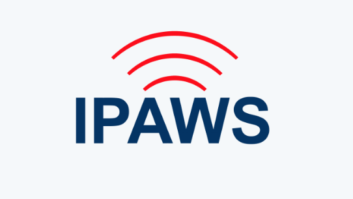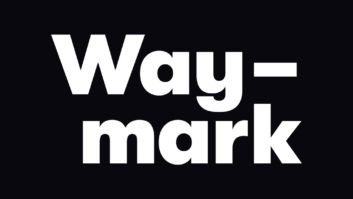IBOC Update – Nov 16, 2005
Nov 16, 2005 11:42 AM, By Mark Krieger, CBT
Stay up to date on the latest IBOC news, business and technology information with the twice-monthly newsletter from Radio magazine.
Index:
- Study Says US Lags Trend toward Cellular-based Music Platforms
- Czech Republic Sponsors DAB, DMB Trials
- BMW Extends HD Radio Option to 6 Series
- Ibiquity Execs to Address Programmers, Consultants on HD Radio
- Temple Commits to Multiple HD Conversion in Philly
- KSTJ Vegas Launches Commercial-Free Multicast
- IBOC by State: Mississippi
- Audiovox Adapter Allows XM Audio and Display on OEM AM/FM Radios
- An Introduction to the New Language Surrounding HD Radio
To receive these articles twice a month in your e-mail, subscribe to the IBOC Update – Insight on HD Radio e-newsletter. Click here to subscribe.NewsStudy Says U.S. Lags Trend toward Cellular-based Music Platforms
Almost one in five (19 percent) of all mobile phone owners worldwide now listen to music on their phones, according to a new study by TNS, an international market research group. Amongst this global group, some 16 percent of all music they listen to daily is on their phones, compared with 15 percent on a stereo system at home and just 10 percent on a personal digital music player, such as an Ipod. However, in the United States, only four percent of cell phone users listened to MP3s or digital music on their cell phone on a regular basis.Across the 15 countries covered by the study, 13 percent of all mobile phone users said that they use MP3 or digital music players on their phones daily or weekly. While the United States ranked last in the study, with only four percent, 26 percent of those polled in South Korea report regular listening of music via their mobile phone. In Hong Kong, 23 percent of respondents reported using their phones to listen to music; and 19 percent of those surveyed in the United Kingdom also reported regular usage.One possible reason for slow U.S. adoption of the technology is that phones capable of downloading music were only introduced in the U.S. market within the past few months, and U.S. consumers are still unfamiliar with their uses and potential. In the same U.S.-based study, nearly half of all users indicated no interest in having music on their wireless phones, while another 25 percent pointed to the expense associated with purchasing a wireless phone as a barrier to purchasing an integrated Ipod or MP3 handset. These numbers suggest that considerable promotional challenges lie ahead for companies seeking to market music-capable handsets to U.S. consumers.Among those factors globally deterring mobile phone users from downloading more songs onto their phones are insufficient memory, poor quality of the listening experience and transferring music from other devices is easier than downloading. U.S. respondents listed expensive charges and the fact that downloading uses up battery life as the top two reasons for not downloading music.As proof of the growing global appetite for music on mobile phones, more than a third (35 percent) of phone users worldwide chose mobile music as one of the five applications they would like to start using, or use more of in the future. This puts mobile music in top place as the application with highest potential. This figure is highest amongst mobile users in South Korea (60 percent) and Sweden (46 percent). Once again, the United States ranked last in the study, with only 19 percent of respondents stating that they want to start listening to music on their cell phones.”The pricing of downloads is still probably the greatest single barrier to encouraging more people to download and listen to songs on their phones,” said Hanis Harun, regional director, Asia Pacific TNS Technology. “Other factors play a smaller part, including limitations of the capabilities of handsets and the time it takes to download. However, all the evidence points towards mobile music becoming increasingly competitive, on a worldwide scale, with personal digital music players such as Ipods.”Respondents also showed interest in starting to use or use more of the following applications in the future: camera for photography (34 percent), SMS (28 percent), live radio (25 percent) and video camera (24 percent). More information about the study can be found at www.tns-global.com/gti2005.Czech Republic Sponsors DAB, DMB Trials
The World DAB Forum, an organization devoted to the promotion and adoption of Eureka 147 DAB broadcast technology worldwide, has announced that the government of the Czech Republic has granted permission for two telecommunication firms to begin a pilot test of DAB and Digital Mobile Broadcasting (DMB) in that country.Teleko S.R.O. and Ceske Radiomunikace were selected to operate the band III transmission network that will carry a DAB multiplex and DMB signal using system encoders provided by Factum of Sweden.Five Czech radio broadcast signals will be carried over the DAB multiplex, while three commercial TV channels will be carried over the DMB signal to portable handset devices provided by three manufacturers of cellular handsets. The pilot test is authorized over a 30-day period.BusinessBMW Extends HD Radio Option to 6 Series
BMW has announced that it will extend the factory option of HD Radio receivers to include its 2006 model year six-class vehicles. The option is said to carry a sticker cost of about $500. In August, the upscale automaker made news when it announced HD radio availability in it’s seven-class vehicles, making it one of the first carmakers to offer the technology as an OEM option.Ibiquity Execs to Address Programmers, Consultants on HD Radio
Ibiquity Digital’s CEO Robert Struble and Director of Broadcast Marketing Don Kelly will be joined by Greater Media’s Tom Bender to host a seminar for radio programmers and consultants at Arbitron’s 2005 Consultant and Programmer Fly-In on Dec. 7. The event will headline the first day of Arbitron’s 2005 Consultant and Programmer Fly-In at the Arbitron Research and Technology Center in Columbia, MD.”We’re reaching out to programmers and consultants to discuss the benefits of HD Radio,” said Struble. “HD Radio helps stations offer new content and extend their brand on a new consumer platform. Helping programming and research consultants understand what HD Radio has to offer will help the radio stations they serve make the most of their investment in this new technology.”Bender is senior vice president of Greater Media’s Detroit operation, where three of that company’s FM outlets are now multicasting via HD Radio secondary program service (SPS) channels.Temple Commits to Multiple HD Conversion in Philly
Temple University Public Radio and Broadcast Electronics have teamed up to drive a major HD Radio conversion project involving the broadcaster’s six FM stations in Philadelphia.The National Public Radio affiliate claims to be among the 10 most listened-to public radio outlets in the country, with six full-powered stations and six translators extending coverage into central and northeastern Pennsylvania, New Jersey and Delaware.The classical and jazz music broadcaster received public funding from the Corporation for Public Broadcasting to convert its six full-powered stations to HD Radio late last year, and has since updated flagship station WRTI-FM to digital using BE turnkey systems.When the conversion and upgrade project is complete, all six Temple University stations–WRTI 90.1, WJAZ 91.7, WRTL 90.7, WRTY 91.1, WRTQ 91.3 and WRTX 91.7–will broadcast an HD Radio main channel, with plans to add multicast program channels along with text data services.KSTJ Vegas Launches Commercial-Free Multicast
KSTJ-FM, Beasley Broadcast Group’s Star 102.7 Las Vegas has launched its Star Party 102.7 HD2 multicast. The commercial-free all music channel features an upbeat club mix of dance and urban 80s music, and is marketing itself as a fee-free alternative to satellite radio and music downloads.The timing of the launch was deliberately set to coincide with SEMA, an automotive specialty products trade event recently held at the LV Convention Center. The new multicast was used to showcase HD Radio in Honda, Scion, Mitsubishi and Toyota vehicles, as well as Tony Stewart’s Hummer and Rapper Mike Jones’ Dodge Charger.As part of AAIW, the SEMA 2006 Show drew attendees from the automotive, truck and SUV, marine and RV markets worldwide with roughly two million square feet of exhibits.IBOC Across AmericaIBOC By State: Mississippi
Ibiquity has a list of stations that have licensed HD Radio technology and notes those that are on the air now. IBOC by state will look at various states and list the stations that are making the transition.Station Format Market Owner On Air Multicasting WJSU-FM 88.5 Jazz/Gospl Jackson Jackson State University No No WTWZ-AM 1120 Cst/BGs/Gsp Jackson Wood Broadcasting Company No No WPRL-FM 91.7 Variety Lorman Alcorn State University No No WHAL-FM 95.7 Inspiration Memphis, TN Clear Channel Radio Yes NoProductsAudiovox Adapter Allows XM Audio and Display on OEM AM/FM Radios
Audiovox and XM Satellite Radio are promoting a new “smart” digital adapter that delivers XM’s satellite radio product with in dash display to any new or used vehicle having a stereo system equipped with Radio Data Service (RDS).Audiovox’s Smart Digital Adaptor, marketed under its Terk brand name, connects the in-dash radio to a hideaway XM Direct tuner box already available nationwide. The driver accesses all XM functions using a full-feature remote control that communicates with the tuner through the Terk adapter. The new technology claims to provides a factory-like XM installation, leaving the dash and existing car stereo head unit intact.What sets the Smart Digital Adaptor apart from other adapters already on the market is that RDS-capable car stereos connected to it and the XM Direct Tuner will display the XM channel names, artist’s name, song title, channel number and music genre on the existing car stereo’s display, much like factory-installed satellite radio receivers. The system achieves this by encoding the XM display data into an RDS text message that scrolls on the radio, which is tuned to an unused FM channel where the XM tuner audio is made available. The user’s factory radio maintains the ability to receive conventional AM and FM radio stations with no reduction in the original functionality, says Audiovox.HD Radio TerminologyAn introduction into the language surrounding IBOC.Advanced Data Services: Advanced data services are any data services consisting of either text, audio, video or other data carried on the IBOC transport other than SIS, MPSD or SPSD.Supplemental Program Service Data: One of two general classes of information sent through the SPS (the other being Supplemental Program Service Audio). Supplemental Program Service Data is Program Service Data that is associated with the Supplemental Program Service.












